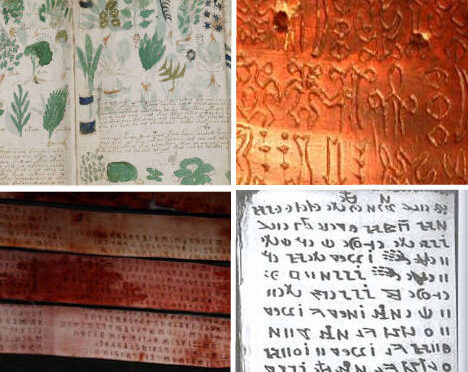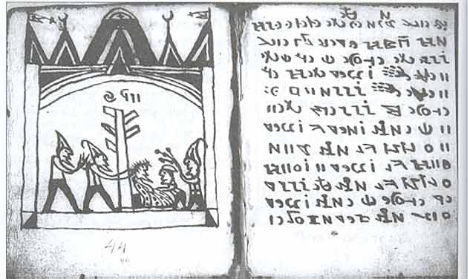Liber Linteus
(images via: wikimedia commons)
As if a linen book from a long-gone civilization weren’t fascinating enough, the origin of the Liber Linteus makes it even more morbidly amazing: it was once the wrappings on a mummy. Most of the Liber Linteus writings, which were removed from the female Egyptian mummy and later made into a book in the 19th century, can’t be translated because they were written in the little-understood Etruscan language. But what little scholars can understand reveals it to be some sort of ritual calendar.
The Rohonc Codex
(image via: wikimedia commons)
On 448 paper pages are transcribed – from right to left – unique symbols that total 10 times higher than any known alphabet in the history of the world. But nobody knows for certain just what the Rohonc Codex says, or who created it. Discovered in Hungary, the text has been studied by numerous paleography experts and scholars and appears to be religious in nature, with the code accompanied by illustrations and symbols of Christian, pagan and Muslim origin. Many Hungarian experts believe it’s a hoax, but if it is, it’s not gibberish – the patterns of the text follow those of authentic languages. Continue reading





 The Research
The Research






